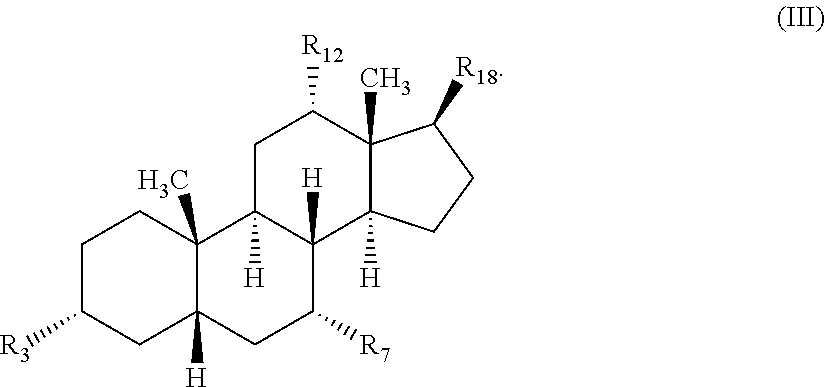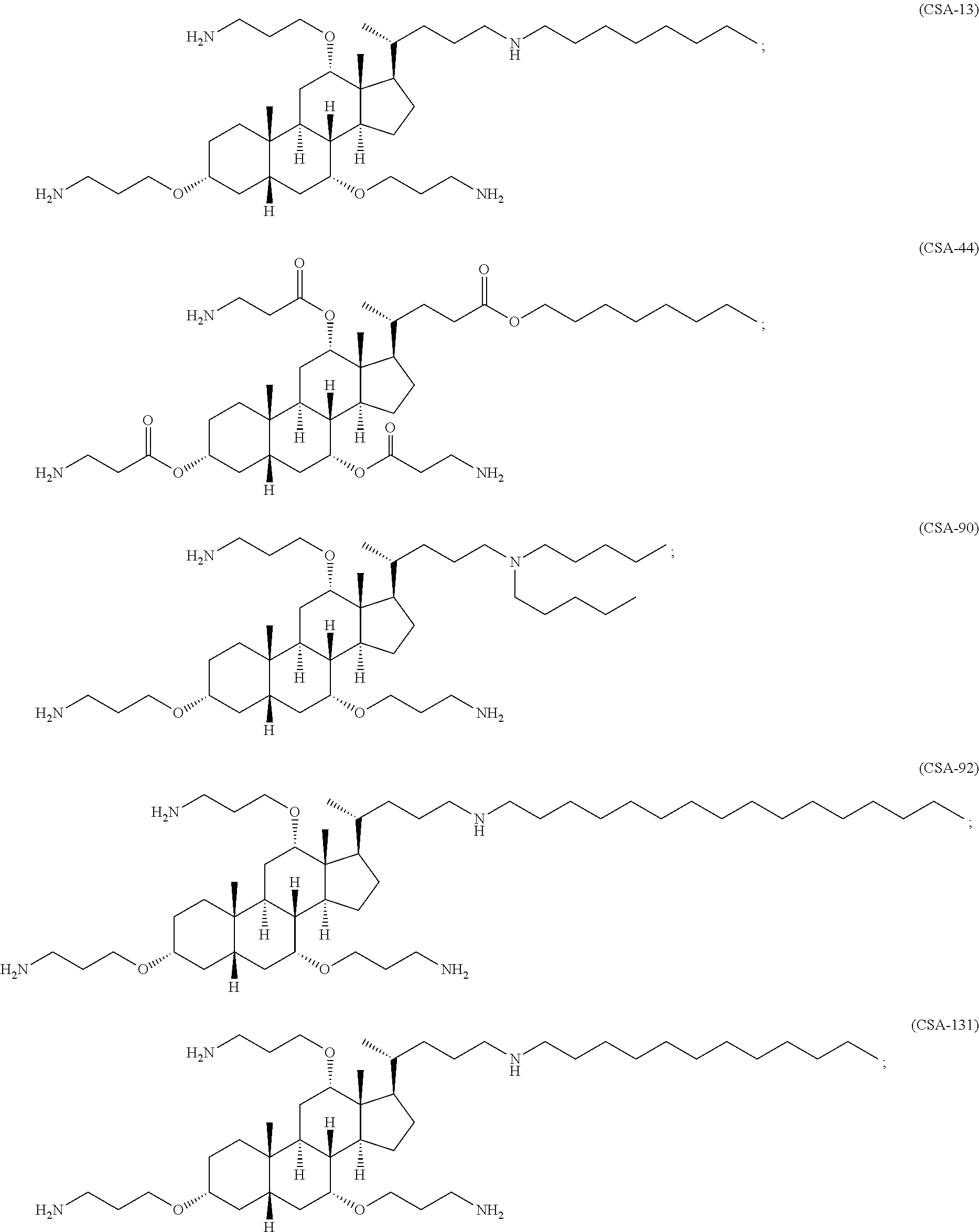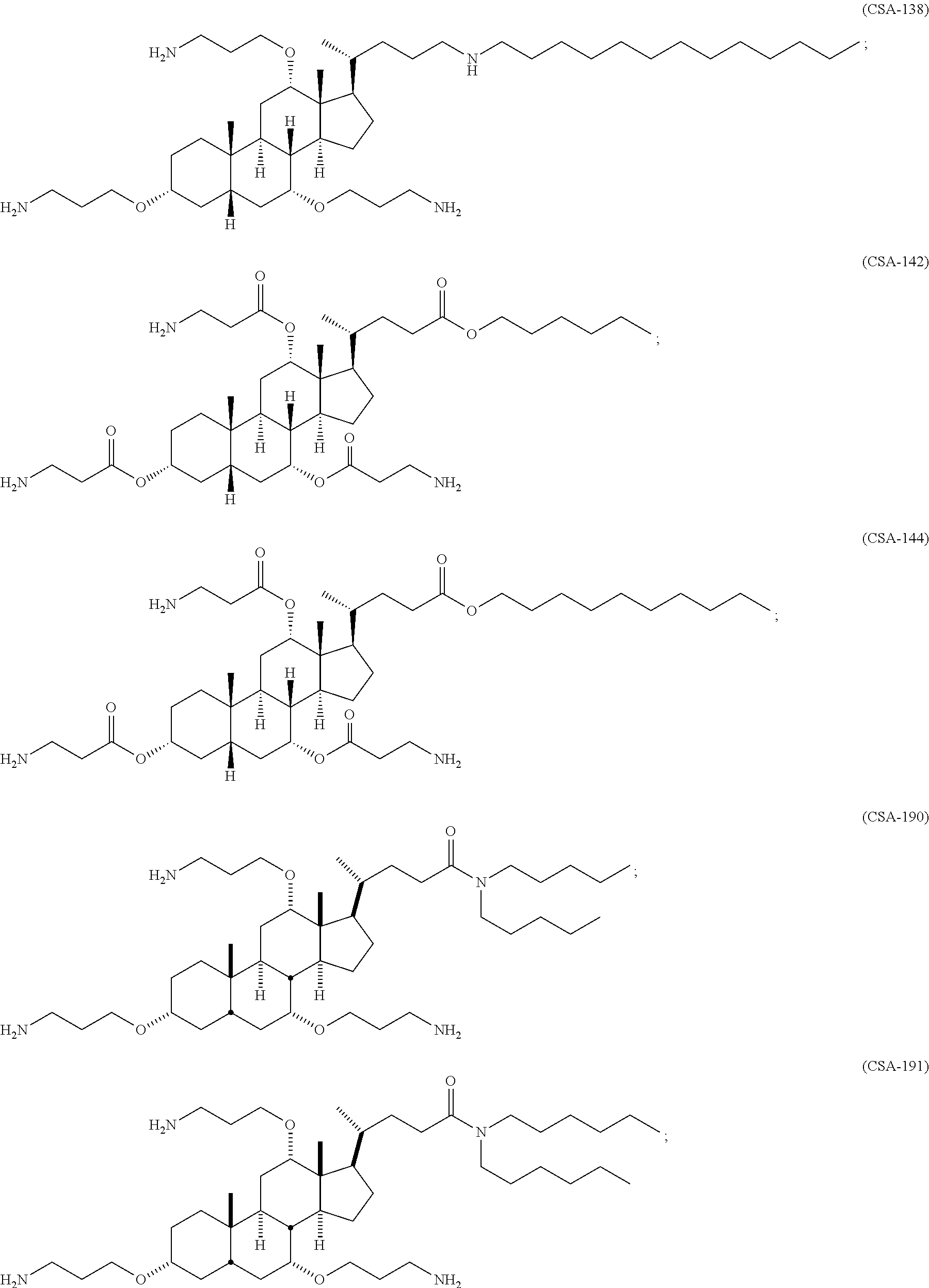Methods for treating fungal infections
a technology for fungal infections and antibiotics, applied in the direction of biocide, drug composition, nervous disorder, etc., can solve the problems of increasing the number of fungal infections, preventing adequate treatment and/or disease prevention, and a significant public health threat worldwid
- Summary
- Abstract
- Description
- Claims
- Application Information
AI Technical Summary
Benefits of technology
Problems solved by technology
Method used
Image
Examples
example 1
Synthesis of CSAs
[0181]Compounds described herein can be prepared by known methods, such as those disclosed in U.S. Pat. No. 6,350,738, which are incorporated herein by reference. A skilled artisan will readily understand that minor variations of starting materials and reagents may be utilized to prepare known and novel cationic steroidal antimicrobials. For example, the preparation of CSA-13 disclosed in U.S. Pat. No. 6,350,738 (compound 133) can be used to prepare CSA-92 by using hexadecylamine rather than octyl amine as disclosed. A skilled artisan will readily appreciate the synthesis of CSAs from fundamental chemistry principles such as those described in the prior art and those exemplified herein. Schematically, for example, the preparation of certain CSA compounds can be accomplished as follows:
[0182]As shown above, compound 1-A is converted to the mesylate, compound 1-B using known conditions. Treatment of compound 1-B with a secondary amine, such as HNR1R2, results in the f...
example 2
Minimum Inhibitory Concentration (MIC) Determination
[0183]CSA 8 and CSA 13 were dissolved in dimethyl sulfoxide (DMSO) to create stock solutions. These solutions were applied to fungal isolates to determine the minimum inhibitory concentration (MIC) for each CSA.
[0184]An antifungal agent is serially diluted two-fold in a desired medium to produce ten concentrations of the antifungal under investigation. The range used is chosen to include achievable serum levels of the drug. A standardized inoculum of either yeast cells or conidia is diluted in an equal volume of the desired medium. The yeast or conidia inoculum is incubated in the serially diluted drug wells at 35° C. Two wells are used as controls. The negative control well has only media and serves as a sterility control. The positive control well has the standardized inoculum with no drug, and is used to compare with the amount of growth in the drug wells.
[0185]Testing is reported as an MIC, or minimum inhibitory concentration i...
PUM
 Login to view more
Login to view more Abstract
Description
Claims
Application Information
 Login to view more
Login to view more - R&D Engineer
- R&D Manager
- IP Professional
- Industry Leading Data Capabilities
- Powerful AI technology
- Patent DNA Extraction
Browse by: Latest US Patents, China's latest patents, Technical Efficacy Thesaurus, Application Domain, Technology Topic.
© 2024 PatSnap. All rights reserved.Legal|Privacy policy|Modern Slavery Act Transparency Statement|Sitemap



